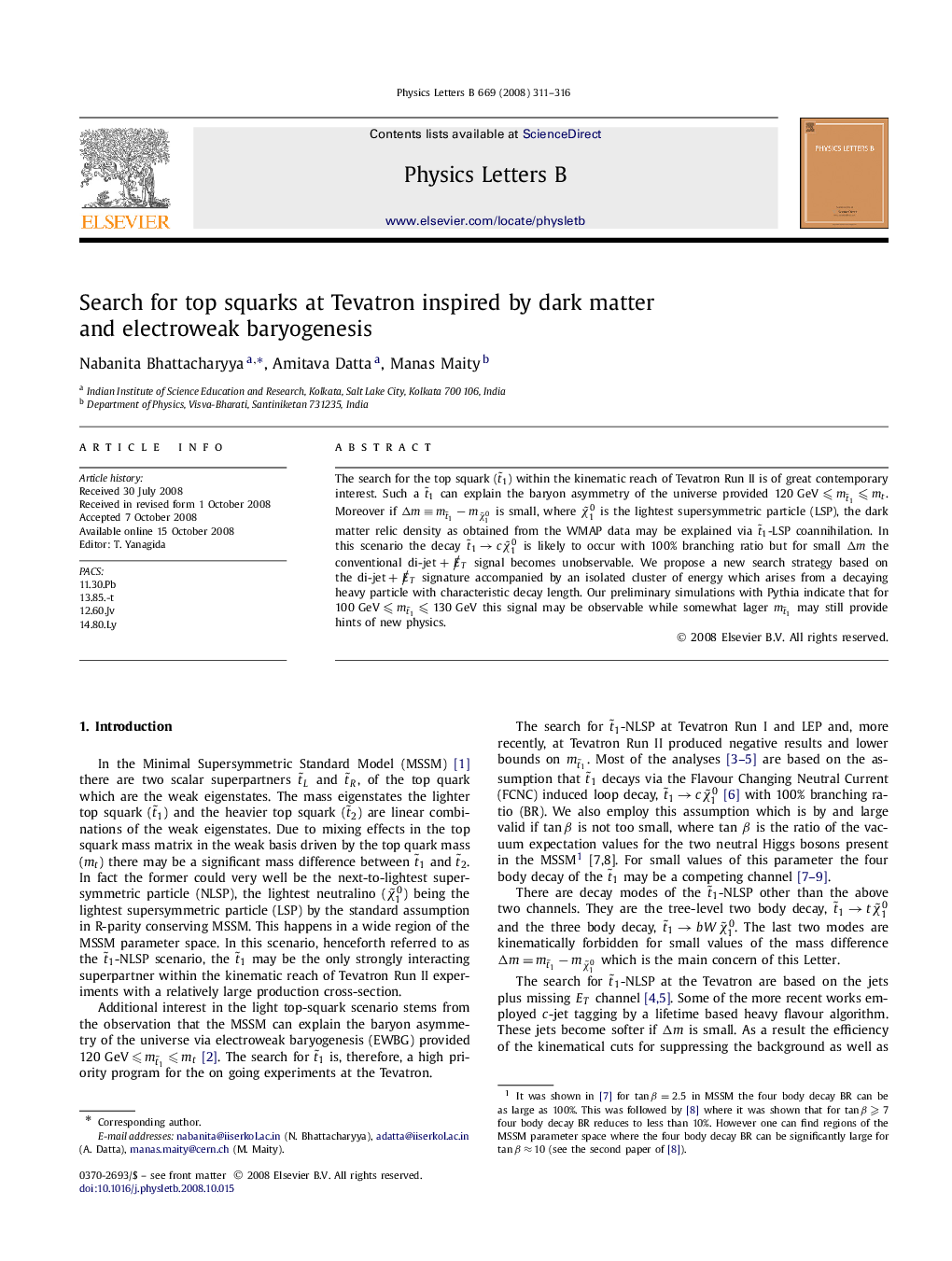| Article ID | Journal | Published Year | Pages | File Type |
|---|---|---|---|---|
| 1851282 | Physics Letters B | 2008 | 6 Pages |
Abstract
The search for the top squark (tË1) within the kinematic reach of Tevatron Run II is of great contemporary interest. Such a tË1 can explain the baryon asymmetry of the universe provided 120 GeV⩽mtË1⩽mt. Moreover if Îmâ¡mtË1âmÏË10 is small, where ÏË10 is the lightest supersymmetric particle (LSP), the dark matter relic density as obtained from the WMAP data may be explained via tË1-LSP coannihilation. In this scenario the decay tË1âcÏË10 is likely to occur with 100% branching ratio but for small Îm the conventional di-jet+E̸T signal becomes unobservable. We propose a new search strategy based on the di-jet+E̸T signature accompanied by an isolated cluster of energy which arises from a decaying heavy particle with characteristic decay length. Our preliminary simulations with Pythia indicate that for 100 GeV⩽mtË1⩽130 GeV this signal may be observable while somewhat lager mtË1 may still provide hints of new physics.
Related Topics
Physical Sciences and Engineering
Physics and Astronomy
Nuclear and High Energy Physics
Authors
Nabanita Bhattacharyya, Amitava Datta, Manas Maity,
